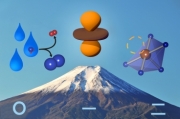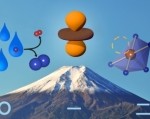
 A team of researchers at MIT has found one of the most effective catalysts ever discovered for splitting oxygen atoms from water molecules — a key reaction for advanced energy-storage systems, including electrolyzers, to produce hydrogen fuel and rechargeable batteries. This new catalyst liberates oxygen at more than 10 times the rate of the best previously known catalyst of its type.
A team of researchers at MIT has found one of the most effective catalysts ever discovered for splitting oxygen atoms from water molecules — a key reaction for advanced energy-storage systems, including electrolyzers, to produce hydrogen fuel and rechargeable batteries. This new catalyst liberates oxygen at more than 10 times the rate of the best previously known catalyst of its type.
The new compound, composed of cobalt, iron and oxygen with other metals, splits oxygen from water (called the Oxygen Evolution Reaction, or OER) at a rate at least an order of magnitude higher than the compound currently considered the gold standard for such reactions, the team says. The compound’s high level of activity was predicted from a systematic experimental study that looked at the catalytic activity of 10 known compounds.
The scientists found that reactivity depended on a specific characteristic: the configuration of the outermost electron of transition metal ions. They were able to use this information to predict the high reactivity of the new compound — which they then confirmed in lab tests.
“We not only identified a fundamental principle” that governs the OER activity of different compounds, “but also we actually found this new compound” based on that principle, says Shao-Horn, the Gail E. Kendall (1978) Associate Professor of Mechanical Engineering and Materials Science and Engineering.
Many other groups have been searching for more efficient catalysts to speed the splitting of water into hydrogen and oxygen. This reaction is key to the production of hydrogen as a fuel to be used in cars; the operation of some rechargeable batteries, including zinc-air batteries; and to generate electricity in devices called fuel cells. Two catalysts are needed for such a reaction — one that liberates the hydrogen atoms, and another for the oxygen atoms — but the oxygen reaction has been the limiting factor in such systems.
Other groups, including one led by MIT’s Daniel Nocera, have focused on similar catalysts that can operate — in a so-called “ artificial leaf ” — at low cost in ordinary water. But such reactions can occur with higher efficiency in alkaline solutions, which are required for the best previously known catalyst, iridium oxide, as well as for this new compound.
Shao-Horn and her collaborators are now working with Nocera, integrating their catalyst with his artificial leaf to produce a self-contained system to generate hydrogen and oxygen when placed in an alkaline solution. They will also be exploring different configurations of the catalyst material to better understand the mechanisms involved. Their initial tests used a powder form of the catalyst; now they plan to try thin films to better understand the reactions.
In addition, even though they have already found the highest rate of activity yet seen, they plan to continue searching for even more efficient catalyst materials. “It’s our belief that there may be others with even higher activity,” Shao-Horn says.



